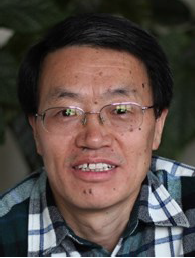Date
Cost
Free and open to the public
Location
Engineering I, Room 288
Description
Over the last decades, we have witnessed tremendous progress on the development of aberration corrected transmission electron microscopy and scanning transmission electron microscopy. As a result of this development, imaging of materials at atomic scale and spectroscopying at sub-nanometer scale become a routine practice. The questions now come to how we extend the microscopy and spectroscopy methodologies to analyze materials at or near realistic condition, typically such as real time observation of catalytic process, oxidation and reduction, bio-tissue in a liquid cell, defects generation and interaction under deformation conditions, mass transport and microstructural evolution, charge and ion transport process. Approaches that are employed to provide in-situ observation of chemical reactions and microstructural evolution include, but are not limited to, the use of differential pumping technologies, the modification of sample holders to enable the application of an external stimulus such as an electromagnetic field or stress, using thin membrane closed cells for experiments involving liquids or gases, and use of liquid with low vapor pressure. In view of these developments, I will in this presentation focus on in-situ techniques that developed for probing into the structural and chemical information of energy storage materials, highlighting direct observation of structural evolution, phase transformation and their correlation with mass, charge and electron transport, providing insights as how active materials failure during the cyclic charging and discharging of a battery. In perspective, challenges and possible direction for further development of the in-situ TEM imaging and spectroscopic methods for both functional and structural materials and other field will also be discussed.
Biography
Chongmin Wang received his B.Sc. and M.Sc. in physics from Lanzhou University in China and Ph.D. in Materials Science and Engineering from University of Leeds, UK. He worked at Max-Planck Institute for Metal Research in Stuttgart in Germany (as an Alexander von Humboldt Research Fellow), National Institute for Materials Science in Japan, and Lehigh University, where he consistently focused on atomic level study of grain boundary structure and chemistry using S/TEM. He is currently a chief scientist at Pacific Northwest National Laboratory and his research interests include the state of the art S/TEM and spectroscopy and their application to materials characterization, especially in situ and operando S/TEM techniques for energy materials application. Dr. Wang pioneered the concept of nanobattery using ionic liquid and a single nanowire for in-situ TEM studies, which leads to his receiving of the 2016 MRS Innovation in Materials Characterization Award and 2012 Microscopy Today Innovation Award. His review paper on in-situ TEM for battery study published in Journal of Materials Research leads to the JMR 2015 “The Paper of The Year Award. Dr. Wang is the recipient of the Rowland Snow Award from the American Ceramic Society, Outstanding Invention Award from the Japanese Science and Education Committee and PNNL Exceptional Contribution Award. He has published more than 300 journal papers, delivered 65 invited and plenary talks. He is serving as a principal editor for JMR.
Presenter

Chongmin Wan, Ph.D.
Environmental Molecular Sciences Laboratory
Pacific Northwest National Laboratory
Richland, Washington
Contact
Jodi Peters Materials Science & Engineering 407-823-0607 Jodi.Peters@ucf.edu